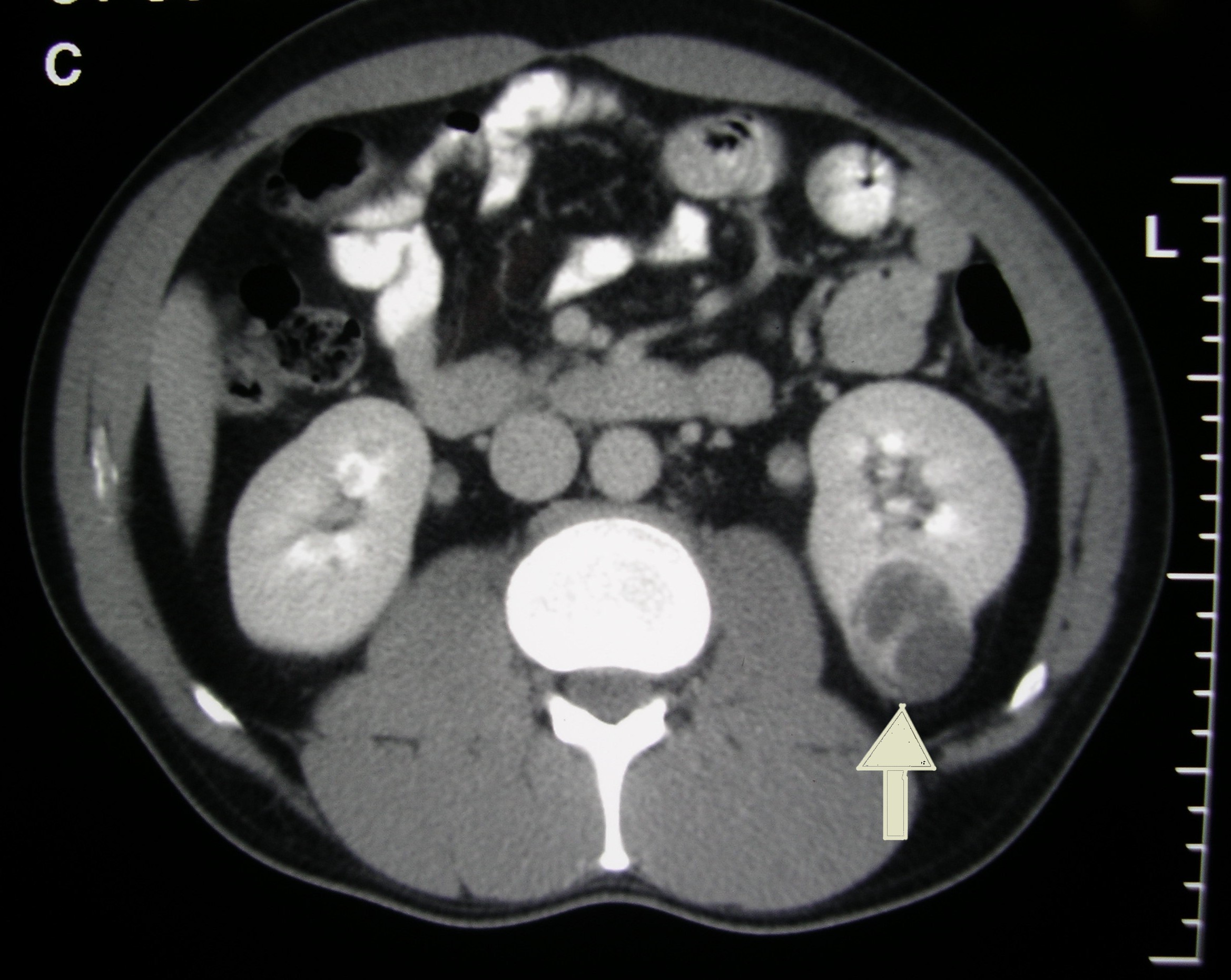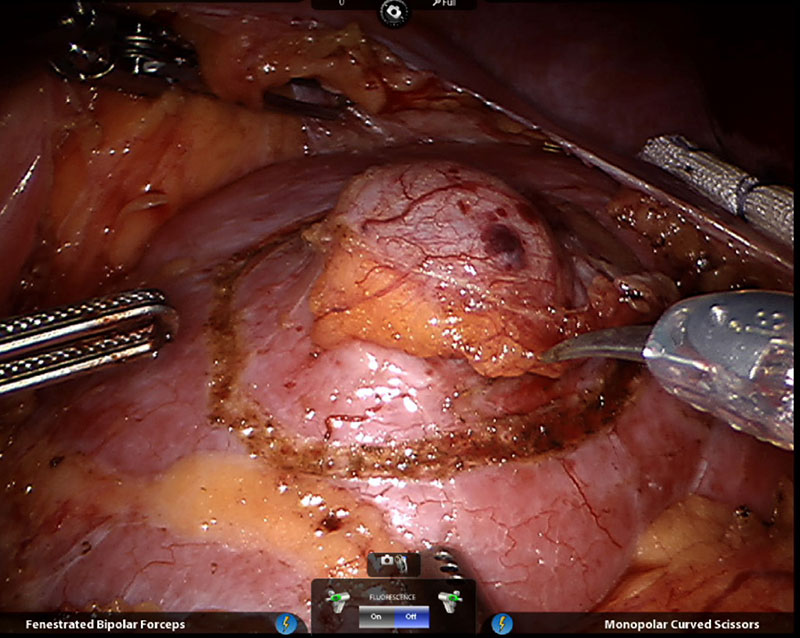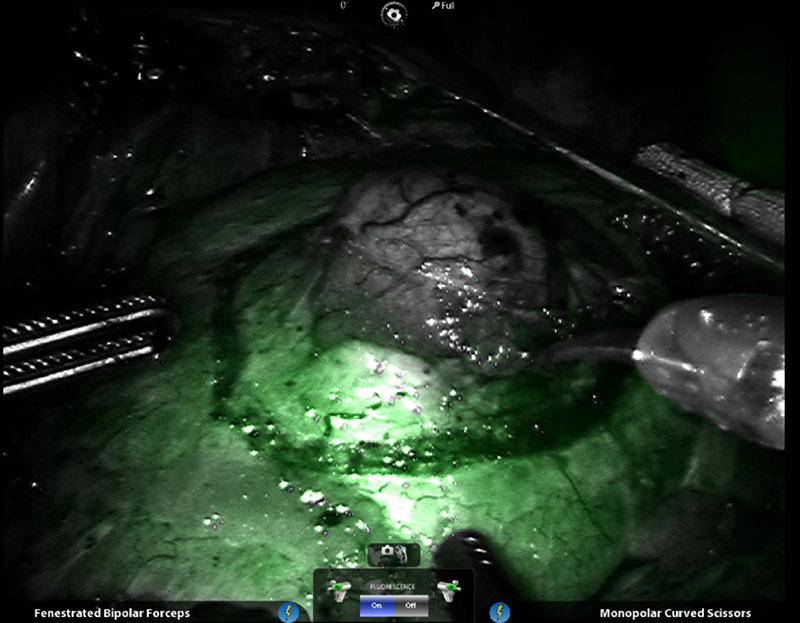Although drugs are available to slow down the progression of advanced kidney cancer the mainstay of treatment remains early detection and surgical removal. With improvements in surgical techniques and Laparoscopic equipment over the last decade the standard operative technique has moved from open to laparoscopic removal of the kidney(nephrectomy).
This has allowed urologists to greatly reduce the short and long term risks of the operation.
Due to increased use of abdominal scanning, however, many patients are having their kidney cancers detected at very early stages. These tumours are often very small and have an extremely low chance of having developed secondaries elsewhere in the kidney or the rest of the body. The appropriateness of sacrificing the whole kidney in such cases was questioned and this led to surgical techniques being developed to treat only the tumour and retain the kidney. This is termed ‘Nephron Sparing Surgery” or more commonly ‘Partial Nephrectomy.’

A small renal cancer suitable for robotic partial nephrectomy
This was initially performed through open surgery. The operation involves exposing the tumour, the kidney and its blood supply and then temporarily clamping the arteries to reduce blood flow to the specific area of the tumour. The tumour is then excised and the resulting defect closed with sutures before the clamps are removed and the blood supply is restored. This clamping, excision and repair needs to be kept to a minimum time in order to protect kidney function.
Due to the technically demanding nature of performing this operation using the Laparoscopic ‘Keyhole’ approach, most surgeons are only able to offer this kidney saving procedure via an open incision.
The advantage of reduced risk of long term kidney failure had to be balanced against the greater complications linked to the incision when compared to laparoscopic nephrectomy such as pain, respiratory compromise and wound hernia.
Our consultants were amongst the pioneers who were able to offer the partial nephrectomy via the laparoscopic approach but patient selection was crucial as undoubtedly the risk of complications and cancer recurrence increases as tumours get bigger and are more centrally located in the kidney.
The introduction of the DaVInci robot has enabled us to overcome these difficulties with its 3-D vision, the use of the robotic articulating arms and application of an immunoflourescance dye to highlight the tumour edge. This allows a more precise dissection of the tumour and closure of the defect with less risk of damaging renal function, less risk of retained cancer and less bleeding.
We can now offer this approach to patients with tumours that in many centres would be resigned to laparoscopic full nephrectomy or open partial nephrectomy.

View of tumour via Davinci system

Edge of above tumour highlighted with indocyanine dye
What to expect
Patients referred for consideration of robotic partial nephrectomy will be seen by one of our experts in clinic and a detailed medical history taken. The investigations to date will be reviewed and if necessary any further tests arranged. The procedure will be discussed in detail, all questioned answered and written information provided. Our dedicated team of secretaries will liaise with you and help you to arrange authorisation through your insurance company or will retrieve an inclusive quote for you if you are self funded. The operative date will be arranged and usually a pre-operative assessment at an interim date will be performed before you are admitted on the day of surgery. The procedure will be performed by the consultant and they will continue to review you post operatively. You will subsequently be seen in the consulting suite with the formal histology of the specimen, at which point your further follow up plan will be arranged.
Information leaflets
MU treatment and investigation specific information leaflets / consent form
Links
British association of surgeons guidance
http://www.baus.org.uk/patients/information_leaflets/176/laparoscopic_partial_removal_of_kidney
National institute of clinical excellence guidance
https://www.nice.org.uk/guidance/ipg151
Press media coverage
http://www.dailymail.co.uk/health/article-2449087/Me-operation-Glowing-green-dye-helps-surgeons-target-tumours.html